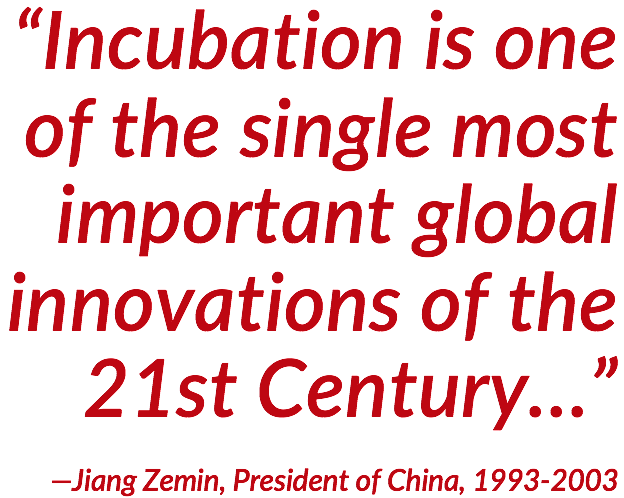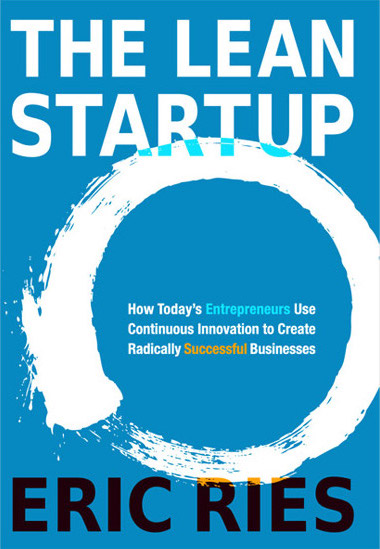Planting the seed of innovation involves risk. It can consume a great deal of time, energy, and resources with no guarantee of return. But when that seed grows into something fruitful, the payoff for a business willing to make the investment can be immense. In recognizing this, increasingly more companies are using innovation as a means to differentiate themselves and gain a competitive advantage in the marketplace. In doing so, many acknowledge that innovation isn’t really optional anymore—it’s imperative for commercial survival.
Yet many companies fail at this in practice. They face the difficult choice of either playing on the familiar field of their existing business model or exploring the uncertain and unfamiliar landscape of innovation. The two strategies are incompatible, presenting a dilemma.
The Innovator’s Dilemma
 Once a company develops its product(s) to the point of dominating market share, a natural next step is to streamline its operations and processes to increase their cost efficiency. This optimization allows the incumbent to grow its business even further and continue to squeeze out less developed competitors.
Once a company develops its product(s) to the point of dominating market share, a natural next step is to streamline its operations and processes to increase their cost efficiency. This optimization allows the incumbent to grow its business even further and continue to squeeze out less developed competitors.
In time, however, to remain competitive in its industry, that same company will need to innovate and disrupt the status quo. The problem is, innovation does not come about as the result of successful companies carrying out sound business practices in established markets. The optimization that leads to commercial success and market dominance ultimately makes a business run so efficiently, it no longer has the room to develop a disruptive technology. And so an incumbent focused only on improving its current business model will actually fail at innovating. Normal business operates under an entirely different paradigm from that which is required to innovate, creating a problem known as the innovator’s dilemma:
“The very decision-making and resource allocation processes that are key to the success of established companies are the very processes that reject disruptive technologies: listening to customers; tracking competitors actions carefully; and investing resources to design and build higher-performance, higher-quality products that will yield greater profit. These are the reasons why great firms stumbled or failed when confronted with disruptive technology change.” —Clayton Christensen, The Innovator’s Dilemma
Faced with this dilemma, how can a company meet the needs of its day-to-day operations while tapping into the new and potentially promising opportunities that innovation affords?
Corporate Incubators: An Answer to the Innovator’s Dilemma
The answer lies with a shift in strategy. In order for an incumbent to develop a completely new technology while continuing to run its current business successfully, it needs to establish a safe space for innovation to thrive, insulated from day-to-day operations. Creating that space enables the innovation to be developed away from the demands of existing customers, product structures, and value networks—all of which threaten innovation and cause a company to fail at it. And that failure ultimately puts it at risk of being disrupted—either by another established company that does create the space or by a new venture that lacks the burden of an existing business model.
That safe space is commonly known as an internal corporate incubator. Encapsulated from a company’s existing commercial and organizational structure, an incubator provides an effective way to foster ideas away from the fast-paced and hostile environment of daily business. It also protects the business at large from the inherent risks of innovation itself.

A corporate incubator provides a safe haven for nurturing ideas into something commercially viable.
In its 2015 U.S. Innovation Survey, Accenture highlighted the payoff of this separation in describing what it coined as the two-engine approach to innovation. Under this agile operating model, the primary engine maintains the steady hum of growth to the business with incremental improvements, while a second engine propels the company forward in leaps and bounds by driving higher-risk innovations. These more ambitious developments can take the form of new product or service categories, the expansion into new markets, or the development of new business models. An internal incubator is a great example of this two-engine approach in action, providing the means for a company to meet the growing imperative of corporate innovation without impacting its core strategy.
In practice, an incubator can be offered as a shared service or established as a self-sustaining entity. As a service, a company’s innovation team sets up an incubator specifically for and within the business unit that will develop and finance the venture. Alternatively, the innovation team can set up what’s commonly known as an innovation lab, using its own resources to fund its own projects.
Whether as a service or a lab, an internal incubator can be used in any of three areas:
- Research: testing the commercial viability of a new technology
- Development: assessing consumer demand for a new product or service
- Production: testing changes in a production process by developing a pilot or proof of concept
Regardless of the type or area, a key aspect common to all corporate incubators is their safety—both to the innovation process and to the larger business.
The Cost Efficiency of Testing the Riskiest Assumption

Every incubator’s success hinges on Lean Startup principles governing efficiency and productivity.
Another hallmark to incubation, one that makes it such a powerful tool in the innovation arsenal, is the efficiency with which it consumes resources. Borrowing from the principles of lean startup, an incubator imparts a strict discipline to developing new ideas by closely tracking and shutting down projects that don’t pass a threshold of productivity. This approach gives those ideas an opportunity to incubate—but not with unlimited free time or a blank check. Such restraint ensures an incubator won’t become a collective money pit, helping to maintain a positive return on a company’s innovation investment.
Some of the most effective incubators impart this strict discipline by identifying and testing the riskiest assumption. That means finding the weakest link in the chain of assumptions on which a successful innovation depends, and building only what’s required to validate it. After all, in order for an innovation to succeed, every single one of its assumptions must be met. Testing the one with the greatest chance of failure achieves the most efficient use of resources.
Incubate: An App With a Powerful Tracking Framework
Brightidea Incubate is an app that provides a powerful framework for tracking ideas and their outcomes, enabling your riskiest assumptions to be tested. It’s the world’s first app for running an incubator with rigor and efficiency.

Incubate provides a powerful framework for tracking ideas and their outcomes.
Away from the normal pressures of a business environment, Incubate lets you set up a pipeline for safely nurturing, managing, and monitoring the development of projects over time, ensuring that only the most promising are sustained.
With Incubate, you can:
- Create an intrapreneureal community
- Generate proofs of concept
- Track success and failure

With detailed Pipeline Management, Incubate makes it easy to visually track and manage projects over time.
And with advanced capabilities such as detailed pipeline management and financial tracking, Incubate provides the control and oversight that’s critical for keeping resources in check while allowing a project to thrive. Which can mean the difference between an idea that languishes and one that flourishes into a viable innovation.
Implementing such a rigorous framework is ultimately what enables a company to innovate without consuming undue resources. And with that, regardless of which ideas ultimately become developed, the larger innovation process has greater chances of success—and the business greater chances of survival.
Find out how our software can help you run your internal incubator more efficiently. Learn more about Incubate and Brightidea’s other innovation management tools.


